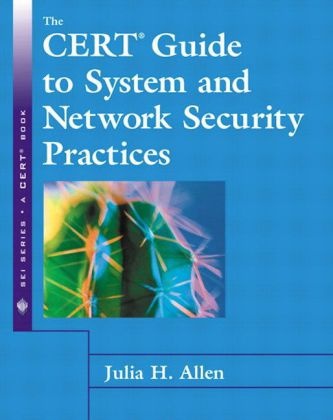Read more
This is an authoritative security handbook from the CERT Coordination Center, the oldest computer security response group in existence and part of the SEI Institute, and Carnegie Mellon University. With a practical, stepwise approach, the book shows students how to protect systems and networks against malicious and inadvertent compromise. The book is divided into two main parts, the first dealing with hardening and securing your system-preventing problems. The second part covers intrusion detection and response, recognizing that even the most secure networks and systems cannot protect against every conceivable threat. The practices selected for the book are based on CERT's extensive data on security breaches and vulnerabilities, providing an authoritative view of the most common problems that students will face as a system and network administrator.
List of contents
Preface.
1. The Handbook of System and Network Security Practices.
I. SECURING COMPUTERS.
2. Securing Network Servers and User Workstations.
3. Securing Public Web Servers.
4. Deploying Firewalls.
II. INTRUSION DETECTION AND RESPONSE.
5. Setting Up Intrusion Detection and Response Practices.
6. Detecting Signs of Intrusion.
7. Responding to Intrusions.
Appendix A. Security Implementations.
Appendix B. Practice-Level Policy Considerations.
Index.
About the author
Julia H. Allen is a senior member of the technical staff within the CERTProgram at the Software Engineering Institute (SEI), a unit of Carnegie Mellon University in Pittsburgh, PA. In addition to her work in software security and assurance, Allen is engaged in developing and transitioning executive outreach programs in enterprise security and governance. She is the author of The CERT Guide to System and Network Security Practices (Addison-Wesley, 2001), Governing for Enterprise Security (CMU/SEI, 2005), and the CERT Podcast Series: Security for Business Leaders (2006/2007).
Summary
This is an authoritative security handbook from the CERT Coordination Center, the oldest computer security response group in existence and part of the SEI Institute, and Carnegie Mellon University.
Additional text
Black-hat hackers--that is, malicious people who want to break into your networks and machines--are proliferating, it's true. But the number of systems available for them to attack is growing at an even faster clip, which means you can head off a lot of attacks on your Internet-connected resources by following the advice in The CERT Guide to System and Network Security Practices. Julia Allen has distilled a series of "best practices" documents from the CERT Coordination Center (a clearing-house for information about computer attacks) into readily absorbable advice on computer security. She shows how to configure systems for inherent resistance to attack, how to set up logs and intrusion detection tools as early and reliable tripwires, and, to a lesser extent, how to deal with an attack in progress. Allen's approach is not focused on the details of particular operating systems, applications, or items of equipment, though she does include some such information in a sizable appendix. Most of the time, procedural outlines are phrased generically ("Disable the serving of Web server file directory listings"). It's up to you to figure out what the steps mean, specifically, in terms of your hardware and software. The advice is carefully researched and therefore valuable. If implemented carefully, Allen's recommended practices should deter all but the most determined hackers from harassing your systems.

